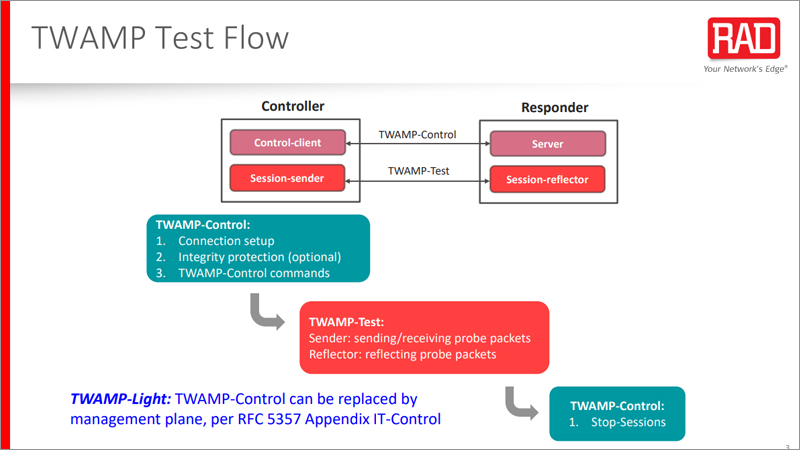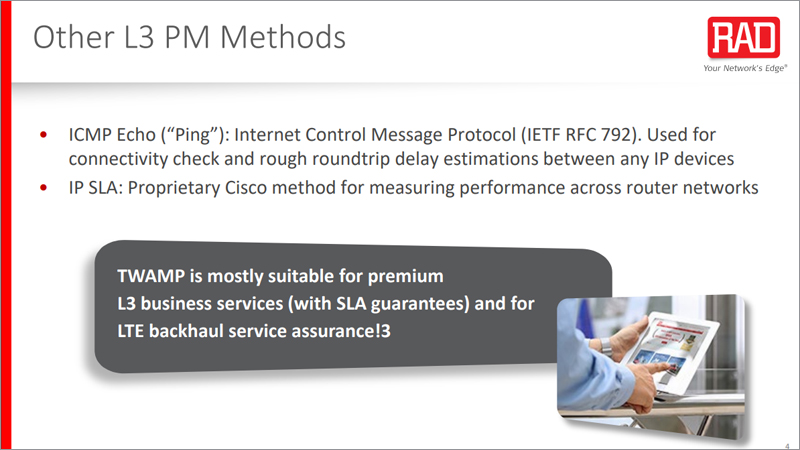Your Network's Edge®
Technology Presentations
You are here
TWAMP Explained
What you will learn
- Why TWAMP is an effective standard-based method for monitoring performance in IP networks
- Why performance guarantees in L3 are now expected for premium business services and LTE backhaul
- Why TWAMP support is a critical element in the PM toolbox of service assurance NIDs
- A solution for full L2 and L3 support for service delivery and performance monitoring in all form-factors.
What is a TWAMP?
TWAMP, or Two-Way Active Measurement Protocol, is a protocol used to measure network performance, particularly latency and jitter, between two points. By understanding the TWAMP meaning, telecom professionals can utilize this protocol to ensure optimal network performance and quality of service. Learn more about how TWAMP works and its applications in this section.
TWAMP consists of two main components: the Control-Client and the Server. The Control-Client initiates the test and collects the results, while the Server responds to the test packets. This client-server model allows for precise measurement of network performance metrics, making TWAMP an essential tool for telecom professionals. Understanding these components can help in better implementing TWAMP in your network.
How TWAMP Works
TWAMP works by sending test packets between two endpoints and measuring the performance of these packets as they travel through the network. This process helps in identifying performance bottlenecks and ensuring optimal network operation.
TWAMP is widely used in various telecom applications, including service level agreement (SLA) monitoring, network troubleshooting, and performance optimization. By measuring latency, jitter, and packet loss, telecom operators can ensure that their networks meet the required performance standards. Explore the different use cases of TWAMP in telecom and how it can benefit your operations.






